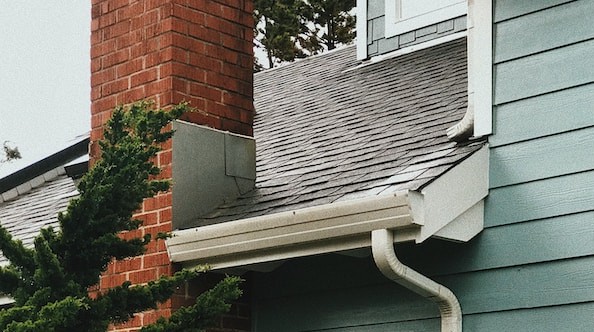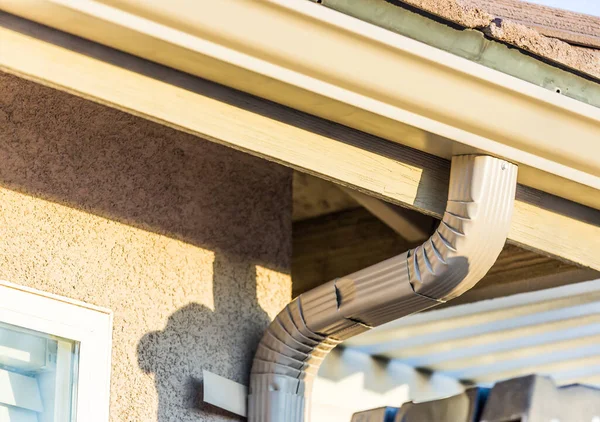-
Table of Contents
- How to Tell When It’s Time to Replace Your Gutters and Downspouts
- What Are the Benefits of Installing New Gutters and Downspouts?
- What Are the Different Types of Gutters and Downspouts?
- How to Choose the Right Gutters and Downspouts for Your Home
- What Are the Signs of Gutter and Downspout Damage?
- How to Properly Maintain Your Gutters and Downspouts for Maximum Efficiency
- Conclusion
How to Tell When It’s Time to Replace Your Gutters and Downspouts
Gutters and downspouts are essential to your home’s exterior, helping protect your roof, walls, and foundation from water damage. But like any other part of your home, they don’t last forever. Knowing when to replace your gutters and downspouts can help avoid costly repairs and keep your home safe and dry.
Here are some signs that it’s time to replace your gutters and downspouts:
- Visible Damage: If you see visible damage to your gutters and downspouts, such as rust, cracks, or holes, it’s time to replace them. Even tiny cracks can lead to more significant problems, so replacing them as soon as possible is best.
- Clogged Gutters: Gutters with leaves, twigs, and other debris require replacement. Clogged gutters can cause water to back up and overflow, damaging your roof, walls, and foundation.
- Sagging Gutters: If your gutters are sagging or pulling away from your home, it’s time to replace them. Sagging gutters can cause water to pool in certain areas, leading to water damage.
- Leaking Gutters: If your gutters are leaking, it’s time to replace them. Leaking gutters can cause water to pool around your foundation, leading to water damage and even foundation problems.
If you notice any of these signs, it’s time to replace your gutters and downspouts. Replacing them can help protect your home from water damage and save you money in the long run.

Photo by Zachary Keimig on Unsplash
What Are the Benefits of Installing New Gutters and Downspouts?
Installing new gutters and downspouts can provide several benefits to homeowners. Here are some of the essential advantages of installing new gutters and downspouts:
- Improved Drainage: New gutters and downspouts can help improve water drainage away from your home to prevent water from pooling around your foundation, leading to costly damage over time.
- Increased Curb Appeal: New gutters and downspouts can help improve your home’s overall look to increase the value of your home and make it more attractive to potential buyers.
- Reduced Maintenance: New gutters and downspouts are more durable and require less maintenance than older models to save you time and money in the long run.
- Improved Safety: New gutters and downspouts can help to reduce the risk of water damage to your home to keep your family safe from potential hazards such as mold and mildew.
Installing new gutters and downspouts can provide several benefits to homeowners. From improved drainage and increased curb appeal to reduced maintenance and enhanced safety, new gutters and downspouts can help to protect your home and make it look more attractive.
What Are the Different Types of Gutters and Downspouts?
Gutters and downspouts are an essential part of any home’s roofing system. They help protect the home’s foundation by diverting rainwater away from the house. Several different types of gutters and downspouts are available, each with advantages and disadvantages.
K-Style Gutters: K-style gutters are the most common in homes today. They are made from aluminum or vinyl and feature a flat bottom with a curved top. This style of gutter is easy to install and maintain and is available in various colors.
Half-Round Gutters: Half-round gutters are similar to K-style gutters but feature a rounded bottom instead of a flat one. They are usually made from copper or aluminum and are more expensive than K-style gutters. Half-round gutters are more aesthetically pleasing than K-style gutters but are more challenging to install and maintain.
Seamless Gutters: Seamless gutters are made from a single piece of aluminum or vinyl and are custom-fitted to the home. They are more expensive than other gutters but are also more durable and require less maintenance.
Downspouts: Downspouts are pipes that carry water away from the gutters. They come in various sizes and materials, including aluminum, copper, and vinyl. Install downspouts at least 10 feet from the home’s foundation to ensure proper drainage.
Gutter Guards: Gutter guards are covers installed over the gutters to prevent leaves and debris from clogging them. They are available in various materials, including plastic, metal, and mesh. Gutter guards can help reduce the maintenance required for gutters, but they can also be expensive.
No matter which type of gutter and downspout system you choose, proper installation is vital to ensure it is maintained to protect your home from water damage and other issues caused by improper drainage.
How to Choose the Right Gutters and Downspouts for Your Home
The right gutters and downspouts are essential when protecting your home from water damage. Gutters and downspouts collect and divert rainwater away from your home’s foundation, preventing water from pooling around your home and causing damage. Choosing the proper gutters and downspouts for your home can be daunting, but with the correct information, you can decide to keep your home safe and dry.
First, consider the size of your home and the amount of rainfall it receives to determine the size of the gutters and downspouts you need. Gutters come in various sizes, from small 4-inch gutters to oversized 8-inch gutters. The larger the gutter, the more rainwater it can collect and divert away from your home. Downspouts also come in a variety of sizes, from 2-inch to 6-inch. The larger the downspout, the more rainwater it can carry away from your home.
Next, consider the material of the gutters and downspouts. The most common materials are aluminum, vinyl, and steel. Aluminum is the most popular choice because it is lightweight, durable, and affordable. Vinyl is also popular because it is lightweight and easy to install. Steel is the most durable option but also the most expensive.
Finally, consider the style of the gutters and downspouts. Gutters come in various types, including K-style, half-round, and box. K-style gutters are the most popular choice because they are the most efficient at collecting and diverting rainwater from your home. Half-round gutters are also famous because they are aesthetically pleasing. Box gutters are the most efficient at collecting and diverting rainwater but also the most expensive. Downspouts come in various styles, including round, square, and rectangular.
Choosing the proper gutters and downspouts for your home can be daunting, but with the correct information, you can decide to keep your home safe and dry. Consider the size of your home, the amount of rainfall it receives, the material of the gutters and downspouts, and the style of the gutters and downspouts to ensure you choose the right system for your home.
What Are the Signs of Gutter and Downspout Damage?
Gutter and downspout damage can be challenging to detect, but it is essential to identify and repair any damage as soon as possible. If left uninspected, gutter and downspout damage can lead to severe water damage to your home. Here are some signs of gutter and downspout damage to look out for:
- Sagging gutters: This could be a sign of damage if your gutters are sagging or pulling away from your home. A debris buildup could cause this or be a sign of a more severe issue, such as a broken hanger or a damaged gutter.
- Leaks: If you notice water leaking from your gutters or downspouts, this could be a sign of a damaged seal or a hole in the gutter.
- Rust: If you notice rust on your gutters or downspouts, this could be a sign of corrosion. Corrosion can weaken the metal and cause it to break or fail.
- Cracks: If you notice cracks in your gutters or downspouts, this could indicate age or wear and tear. Cracks can allow water to leak out and cause damage to your home.
- Clogs: Gutters clogged with debris can cause water to back up and overflow leading to water damage to your home and foundation.
If you notice any of these signs of gutter and downspout damage, it is crucial to have them inspected and repaired as soon as possible. Ignoring the problem can lead to more severe damage and costly repairs.
How to Properly Maintain Your Gutters and Downspouts for Maximum Efficiency
Maintaining your gutters and downspouts is essential for keeping your home safe and dry. Properly maintained gutters and downspouts will help protect your home from water damage, prevent flooding, and keep your roof in good condition. Here are some tips to help you keep your gutters and downspouts in top shape:
- Clean your gutters and downspouts regularly. Leaves, twigs, and other debris can clog your gutters and downspouts, preventing water from flowing correctly. Clean your gutters and downspouts at least twice a year or more often if you live in an area with many trees.
- Check for leaks. Inspect your gutters and downspouts for any signs of leaks or damage. If you find any, repair them immediately to prevent further damage.
- Install gutter guards. Gutter guards can help keep debris out of your gutters and downspouts, making them easier to maintain.
- Check for proper drainage. Make sure your gutters and downspouts are draining properly. If you notice any standing water, you may need to adjust the slope of your gutters or add additional downspouts.
- Inspect your roof. Ensure your roof is in good condition and there are no loose or missing shingles. If possible, opt for a no-contact inspection.
By following these tips, you can ensure that your gutters and downspouts are properly maintained and functioning at their best. Properly maintaining your gutters and downspouts will help protect your home from water damage and keep your roof in good condition.
Conclusion
Replacing gutters and downspouts is an essential part of home maintenance. With Ridgeline’s expert advice, you can ensure your gutters and downspouts are in good condition and functioning correctly. With their help, you can ensure your home is safe and secure from water damage.








